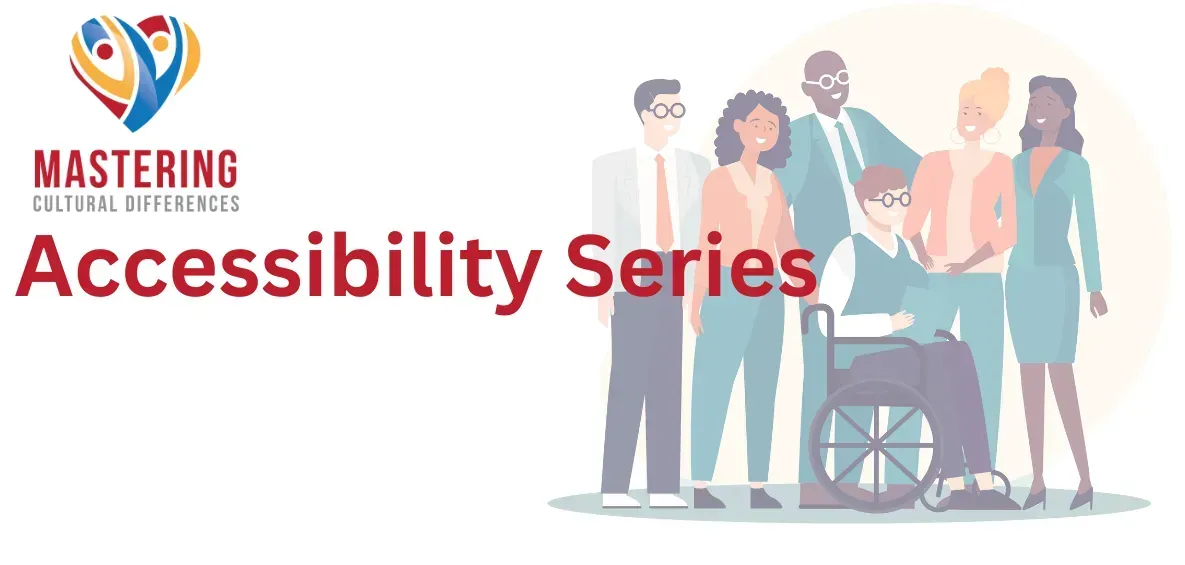The Real Truth About Accessibility: We All Benefit

The Americans with Disabilities Act (ADA), enacted in 1990, was the first comprehensive civil rights law for people with disabilities.
ADA was instrumental in pushing organizations to become more inclusive since it mandated reasonable accommodations for individuals with disabilities such as wheelchair ramps, accessible restrooms, and assistive technologies.
ADA laws went beyond the workplace, though. It prohibited discrimination in all areas of public life, including transportation, public accommodations, and telecommunications.
Title II of the ADA specifically addressed the accessibility of state and local government services and programs, including public infrastructure such as sidewalks, streets, and curb ramps.
Under Title II of the ADA, state and local governments must ensure that their facilities, programs, and services are accessible to individuals with disabilities. This includes making alterations to existing facilities, such as installing curb cuts to ensure accessibility for people with mobility impairments.
How Accessibility Works: The Case of Curb Cuts
A curb cut, also known as a curb ramp, or dropped curb, provides a smooth transition from a sidewalk to a street or parking lot.
Curb cuts typically have a sloped surface that allows wheelchairs or other mobility devices to easily move between the sidewalk and the street without encountering a curb barrier. They are an essential feature of accessible urban infrastructure, enabling wheelchair users to navigate public spaces safely and independently.
Oftentimes, curb cuts are accompanied by tactile paving or other indicators to assist individuals with visual impairments in identifying the transition between pedestrian and vehicular areas.
Curb cuts play a crucial role in enhancing accessibility and improving mobility for individuals with disabilities. For example,
Barrier-Free Access. Curb cuts eliminate barriers between sidewalks and streets, allowing individuals with mobility impairments to navigate public spaces independently and safely. Without curb cuts, wheelchair users would face difficulties maneuvering around curbs, potentially leading to accidents or injuries.
Increased Mobility. By providing a smooth transition between pedestrian pathways and streets, curb cuts enable individuals with disabilities to travel more freely within their communities. This increased mobility fosters greater independence and facilitates participation in daily activities such as shopping, accessing public transportation, or visiting parks and recreational areas.
Equal Access to Services and Facilities. Curb cuts also ensure that individuals with disabilities have equitable access to public services, facilities, and amenities. For example, accessible entrances to buildings, public transportation stops, and recreational areas are often connected to sidewalks via curb cuts, allowing everyone to enter and use these spaces without encountering physical barriers.
Safety and Confidence. curb cuts contribute to the safety and confidence of individuals with disabilities when navigating outdoor environments. They reduce the risk of accidents, such as falls or collisions, when traversing curbs or uneven surfaces. This enhanced safety promotes greater autonomy and encourages individuals to engage more fully in community life.
How Accessibility Benefits All
Although curb cuts play a vital role in promoting accessibility, independence, and inclusion for those with mobility impairment, it is also clear that all of us have benefited from this legislation. Here are just a few examples:
Parents Pushing Strollers. Parents pushing strollers benefit from curb cuts as they provide a smooth transition between the sidewalk and the street, making it easier to maneuver the stroller without lifting it over the curb. This convenience saves parents time and effort, especially when navigating busy urban areas or crossing intersections.
Elderly Individuals with Mobility Aids. Elderly individuals who use walkers, canes, or mobility aids also benefit from curb cuts. These individuals may have difficulty stepping up or down curbs and curb cuts provide a safer pathway for them to navigate sidewalks and cross streets independently.
Bicyclists. Bicyclists benefit from curb cuts when transitioning between bike lanes and sidewalks or when crossing intersections. Curb cuts provide a smoother transition for cyclists, reducing the need to abruptly change speed or direction, thus enhancing safety for both cyclists and pedestrians.
Delivery Workers. Delivery workers, such as postal workers or package couriers, often need to move carts or trolleys loaded with packages along sidewalks and across streets. Curb cuts make it easier for them to navigate their routes efficiently, reducing the risk of tripping or dropping packages while crossing curbs.
Individuals with Temporary Mobility Limitations. People with temporary injuries, such as sprained ankles or leg casts, benefit from curb cuts during their recovery period. Curb cuts provide a more accessible pathway for them to move around safely while they heal, allowing them to maintain their independence and mobility during rehabilitation.
Final Thoughts
Curb cuts benefit a wide range of individuals beyond those who use wheelchairs. As demonstrated, it enhances accessibility and convenience for parents, elderly individuals, delivery workers, cyclists, and people with temporary mobility limitations.
By considering the diverse needs of individuals with disabilities, communities create environments that are welcoming and accessible to everyone, regardless of their physical limitations.
Incorporating curb cuts into urban infrastructure reflects a commitment to inclusive design principles that benefit people of all abilities.
We must understand that accessibility is not about making concessions. It is about inclusion. Inclusion is about creating environments where individuals from diverse backgrounds feel valued, respected, and empowered to fully participate and contribute.
Subscribe to The DEI+ Newsletter!
Sign up to get weekly tips and strategies about diversity, equity, and inclusion to help you increase your DEI IQ. Emails are guaranteed short and to the point!

